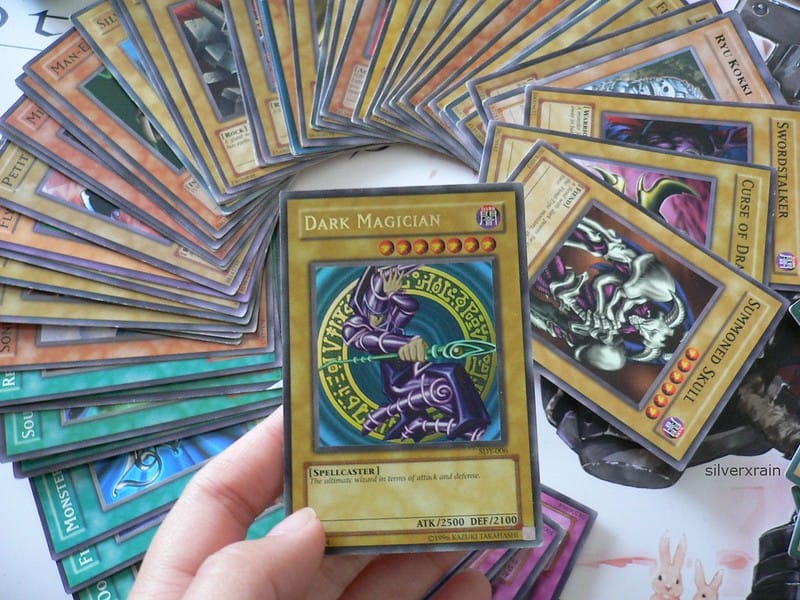With Yu-Gi-Oh being one of the most popular trading card games in the world, there is obviously a lot of money to be made. Many companies are trying their best at replicating booster packs, booster boxes, and even single cards in order to make some quick cash. In the long term, fake Yu-Gi-Oh cards harm the TCG community much more than you think. Fake Yu-Gi-Oh cards are often used to scam others for their money or real cards.
Now that we know how damaging fake Yu-Gi-Oh cards are in the community it still leaves one unanswered question. Where do fake Yu-Gi-Oh cards come from? The main supply of fake Yu-Gi-Oh cards come from China. From there it is dispersed around the world. Fake Yu-Gi-Oh cards can be found in swap meets, flea markets, and many online marketplaces.
Konami has been proactive at shutting down different fake Yu-Gi-Oh card distributors, but many still seem to slip through the cracks. As long as their is money to be made, fake trading cards will be here to stay. The best thing you can do to prevent yourself from being scammed by fake Yu-Gi-Oh Cards is to educate yourself on being able to identify real verse fake cards.
How Can You Tell if Yu-Gi-Oh Cards Are Fake?

The best defense is a good offense. If you equip yourself with the knowledge to spot a fake card, you can prevent yourself from being ripped off or scammed. There are a few attributes you will need to learn in order to properly identify a card as real or fake.
- Inspect the Card in Question: This first step may be obvious, but is often overlooked. Take a good look at how the card is printed. Poorly faked cards are often blurry or do not have as vivid colors as the originals.
- Check the Cards Set Number: Every card is labeled with a set number on the right hand side of the card towards the middle. The set number tells you which set the card comes from. You can use a website like the Yu-Gi-Oh Wiki to search the set number of your card. If it doesn’t pop up, or shows up as a different card than it is possibly fake.
- Look for the Copyright Logo and Hologram Square: Legit Yu-Gi-Oh cards will have “©1996 KAZUKI TAKAHASHI” as well as a small hologram square of the Eye of Horus with Yu-Gi-Oh inside of it. Many fake cards try their best to replicate this, but if you look closely, they will be missing all the details altogether.
- Check the Name, Spelling, and Grammar of the Card: These are a dead giveaway if a Yu-Gi-Oh card is fake or real. A misspelled name, or incorrect grammar in the card description is a tell tale sign that the card is a fake.
How to Avoid Buying Fake Yu-Gi-Oh Cards
Avoid flea markets, swap meets, random stores, thrift stores, garage sales, and the list goes on. Many of these places will condone fake Yu-Gi-Oh cards in order to make a big profit. Not every third party store or market will sell fake cards, but you will have a higher chance to run into them.
Online marketplaces such as Amazon and Ebay are also places where fake Yu-Gi-Oh cards are sometimes sold. It may be less common than a flea market or swap meet, but there is still a chance to run into them.
A good indicator of a fake card or fake booster pack is the price. If the cards or packs price is too good to be true, then it probably is. Fake Yu-Gi-Oh cards are much cheaper to mass produce which will usually result in lower prices than market value.
Where Can I Buy Real Yu-Gi-Oh Cards?
Stick with purchasing your cards from trusted retailers or big supply chains like Wal-Mart, Target, and your local trading card shops. Cards from these types of store and shops will come from Konami distributors and are guaranteed to be real.
When buying from places like Ebay and Amazon, be sure that the seller is legit by looking at their sell history or profile. On Amazon, if an item is shipped and sold by Amazon, that means that this is coming straight from the manufacturer. If you see a different name other than shipped by Amazon, then this is a third party seller and you could be at risk when purchasing from them.
Are Fake Yu-Gi-Oh Cards Worth Anything?
Fake Yu-Gi-Oh cards are not worth anything. Fake cards cannot legally be used in Yu-Gi-Oh tournaments and also have no monetary value due to their real counterparts. The rarity and popularity of a card is what determines it’s market value.
A fake Yu-Gi-Oh card has its rarity stripped away solely due to the fact that it is not an original print from the manufacturer. No matter how good a fake card looks, it will always be worth nothing to its legit counterpart.
Final Thoughts
A majority of the fake Yu-Gi-Oh cards come from factories in China that mass produce the cards. These cards are then sold and shipped all around the world. Fake cards are often bought by scammers looking to sell these cards as real to make big profits.
Make sure to do your due diligence and fully inspect a card or booster pack before purchasing. Always look for the tell tale signs of a fake card. The cards font, picture quality, copyright, hologram, and description are all good cues to tell if a card is real or fake.
Do all your card purchasing from trusted retailers or shops. Wal-Mart, Target, and your local card shops are probably the best options out there. Ecommerce marketplaces like Amazon and Ebay will needed to be taken with caution as you can still run into fake cards if you buy from untrusted or unverified sellers.

